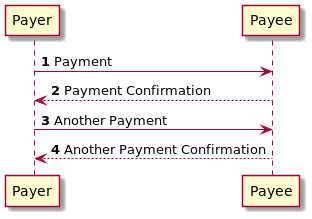Difference between revisions of "Use Case Diagram"
Wiki admin (talk | contribs) |
Wiki admin (talk | contribs) |
||
| Line 1: | Line 1: | ||
== Definition == | == Definition == | ||
| − | A '''Use Case Diagram''' is an UML diagram that aims to present a statement of functionality required of a system (e.g. software) | + | A '''Use Case Diagram''' is an UML diagram that aims to present a statement of functionality required of a system (e.g. software). The units of functionality that the system provides for its users are called use cases. |
| + | |||
| + | It is a type of behavioral diagram that enables the definition of requirements that a system must fulfill. The diagram describes which users use which functionalities of the system. It does not address specific details of an implementation. | ||
| + | |||
| + | A use case describes functionality expected from the system. It may encompas a number of functions that happen (are performed or executed) when using a system. A use case provides a tangible benefit for one or more (entities) actors. | ||
| + | |||
| + | In general, a use case is triggered either by invocation (stimulus) of an actor or by a trigger event. | ||
== PlantUML Elements == | == PlantUML Elements == | ||
Revision as of 17:42, 16 February 2022
Definition
A Use Case Diagram is an UML diagram that aims to present a statement of functionality required of a system (e.g. software). The units of functionality that the system provides for its users are called use cases.
It is a type of behavioral diagram that enables the definition of requirements that a system must fulfill. The diagram describes which users use which functionalities of the system. It does not address specific details of an implementation.
A use case describes functionality expected from the system. It may encompas a number of functions that happen (are performed or executed) when using a system. A use case provides a tangible benefit for one or more (entities) actors.
In general, a use case is triggered either by invocation (stimulus) of an actor or by a trigger event.
PlantUML Elements
A PlantUML use case diagram specifies and shows the following:
- An Actor represents a requirement (stimulus) of the system
- An Action representing a capability of the system
- A Subject representing the item acted upon by an Action of the system
Example
@startuml 'https://plantuml.com/sequence-diagram autonumber Payer -> Payee: Payment Payee --> Payer: Payment Confirmation Payer -> Payee: Another Payment Payee --> Payer: Another Payment Confirmation @enduml
